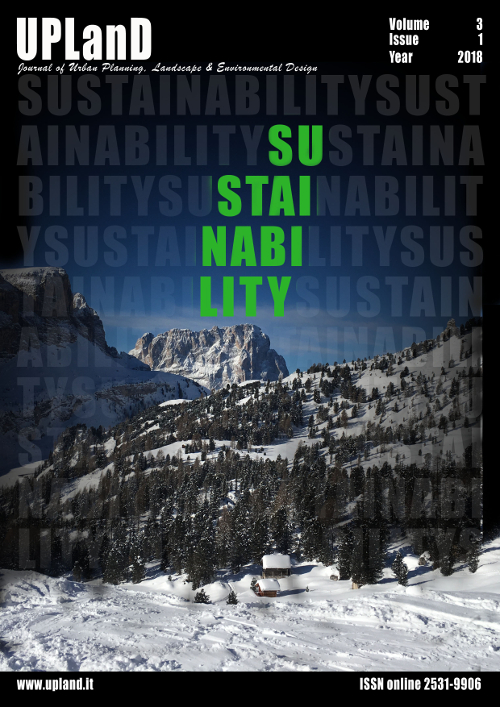Environment Friendly and Sustainable Transportation in Harare: Is a functional Transportation Tool Box Model the Answer?
Main Article Content
Abstract
Transport is an essential part of everyday life and is central to sustainable development. It enables access to employment, business, education, health services, and social interaction. The world’s prosperity and well-being are inextricably linked to transport and the choices made available to them. This paper reviews current thinking about sustainable transportation as part of a broader strategy of transportation and land use planning for sustainability in Harare. Strategies for increasing transportation sustainability include demand management, operations management, pricing policies, vehicle technology improvements, clean fuels, and integrated land use and transportation planning. The transportation toolbox presents a range of sustainable strategies that can potentially address transportation issues within a corridor to provide a systematic approach to develop projects to address corridor transportation needs. As Harare grows, traffic generation is anticipated to increase with significant impact on the transportation system. A lack of sustainable transport infrastructure and affordable services remains a major obstacle to the development of the transport sector in Harare.
Downloads
Article Details

This work is licensed under a Creative Commons Attribution-NonCommercial-NoDerivatives 4.0 International License.
Authors who publish with this journal agree to the following terms:- Authors retain copyright and grant the journal right of first publication with the work simultaneously licensed under a Creative Commons Attribution License that allows others to share the work with an acknowledgement of the work's authorship and initial publication in this journal.
- Authors are able to enter into separate, additional contractual arrangements for the non-exclusive distribution of the journal's published version of the work (e.g., post it to an institutional repository or publish it in a book), with an acknowledgement of its initial publication in this journal.
- Authors are permitted and encouraged to post their work online (e.g., in institutional repositories or on their website) prior to and during the submission process, as it can lead to productive exchanges, as well as earlier and greater citation of published work (See The Effect of Open Access).
References
Beatley, T. (1995). The many meanings of sustainability, Journal of Planning Literature, May, Vol. 9, No. 4, pp.339–342. doi: 10.1177/088541229500900401
Black, W. R., & Nijkamp, P. (2002). Social Change and Sustainable Transport, Bloomington, Indiana: Indiana University Press.
Central Vehicle Registry (CVR) (2017). Brief Background. Retrieved from: http://www.transcom.gov.zw/index.php/departments/road-motor-transportation-rmt-vr/central-vehicle-registry-cvr. Accessed 19 November 2017.
European Union Council of Ministers of Transport (EUCMT) (2017). Transport. Retrieved from: https://www.bmvit.gv.at/en/verkehr/index.html. Accessed 20 December 2017.
Litman, T. (2008). Sustainable Transportation Indicators: A Recommended Research Programme for Developing Sustainable Transportation Indicators and Data, Sustainable Indicators Subcommittee of the Transportation Research Board Litman: Subcommittee Chairperson, 10 November 2008. Retrieved from: www.vtpi.org/sustain/sti.pdf Accessed 10 October 2017.
Litman, T. (2014). All Measured Indicators for Sustainable and Livable Transport Planning Victoria Transport Policy Institute, 4 June 2014. Retrieved from: www.vtpi.org/wellmeas.pdf. Accessed 5 November 2017.
Mbara, T.C. (2015). Achieving Sustainable Urban Transport in Harare, Zimbabwe: What are the Requirements to Reach the Milestone? Retrieved form: http://www.codatu.org/wp-content/uploads/Ttenda-Mbara_pdf. Accessed 20 December 2017.
Ministry of Transport and Infrastructure Development (2012). National Transport Policy February 2012.
SADC (2017). Protocol on Transport, Communications and Meteorology in The Southern African Development Community (SADC) Region, Gaborone, Botswana: SADC.
Sgobbo, A. (2017). Eco-social innovation for efficient urban metabolisms. TECHNE Journal of Technology for Architecture and Environment, 14, 337-344. doi: 10.13128/Techne-20812
Singh, M. (2009). Urban Planning and Management: Best Practices - Land Transport in Singapore. http://unpan1.un.org/intradoc/groups/public/documents/APCITY/UNPAN007490.pdf. Accessed 20 November 2017
The Herald, 22 July 2013. Write off all debts, Govt orders councils. Retrieved from: http://www.herald.co.zw/write-off-all-debts-govt-orders-councils. Accessed 25 November 2017.
The Zimbabwe Herald 11 February 2017, Zimbabwe Road Rehabilitation to Chew USD 2,2 Billion. Retrieved from: http://www.herald.co.zw/zim-road-rehab-to-chew-22bn. Accessed 20 December 2017.
Tumlin, J. (2012). Sustainable Transportation Planning: Tools for creating Vibrant Healthy and Resilient Communities. Hoboken, US: Wiley and Sons.
Vehicle Inspectorate Department (VID) About Vehicle Inspection. Retrieved from: http://www.transcom.gov.zw/index.php/departments/vehicle-inspectorate-department-vid. Accessed 19 October 2017.
WHO (2011). 10 Facts on Global Road Safety. Retrieved from: http://www.who.int/features/factfiles/roadsafety/en/index.html. Accessed 22 November 2017.
World Health Organization and FIA Foundation (2010). A Decade of Action for Road Safety 2011-2020. Retrieved from: http://www.decadeofaction.org/. Accessed 22 December 2017.
Zimbabwe Republic Police (ZRP) National Traffic Branch. Retrieved from: http://www.zrp.gov.zw/index.php?option=com_content&view=article&id=82&Itemid=740. Accessed 19 September 2017.

